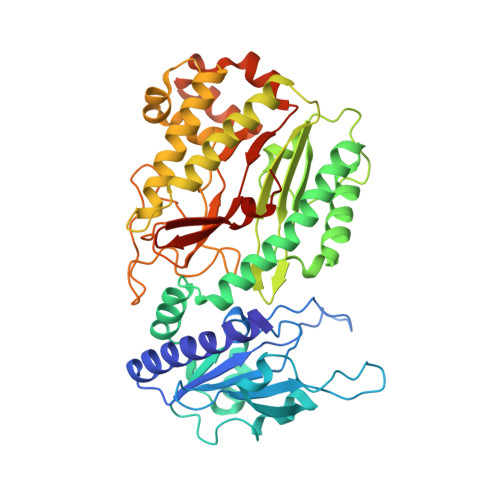Repurposing a bacterial prolidase for organophosphorus hydrolysis: Reshaped catalytic cavity switches substrate selectivity.
Yang, J., Xiao, Y.Z., Li, R., Liu, Y., Long, L.J.(2020) Biotechnol Bioeng 117: 2694-2702
- PubMed: 32515491
- DOI: https://doi.org/10.1002/bit.27455
- Primary Citation of Related Structures:
6AH7, 6AH8 - PubMed Abstract:
Enzyme promiscuity is critical to the acquisition of evolutionary plasticity in cells and can be recruited for high-value chemical synthesis or xenobiotic degradation. The molecular determinants of substrate ambiguity are essential to this activity; however, these details remain unknown. Here, we performed the directed evolution of a prolidase to enhance its initially weak paraoxonase activity. The in vitro evolution led to an unexpected 1,000,000-fold switch in substrate selectivity, with a 30-fold increase in paraoxon hydrolysis and 40,000-fold decrease in peptide hydrolysis. Structural and in silico analyses revealed enlarged catalytic cavities and substrate repositioning as responsible for rapid catalytic transitions between distinct chemical reactions.
- CAS Key Laboratory of Tropical Marine Bio-resources and Ecology, Guangdong Key Laboratory of Marine Materia Medica, South China Sea Institute of Oceanology, Chinese Academy of Sciences, Guangzhou, China.
Organizational Affiliation:


















